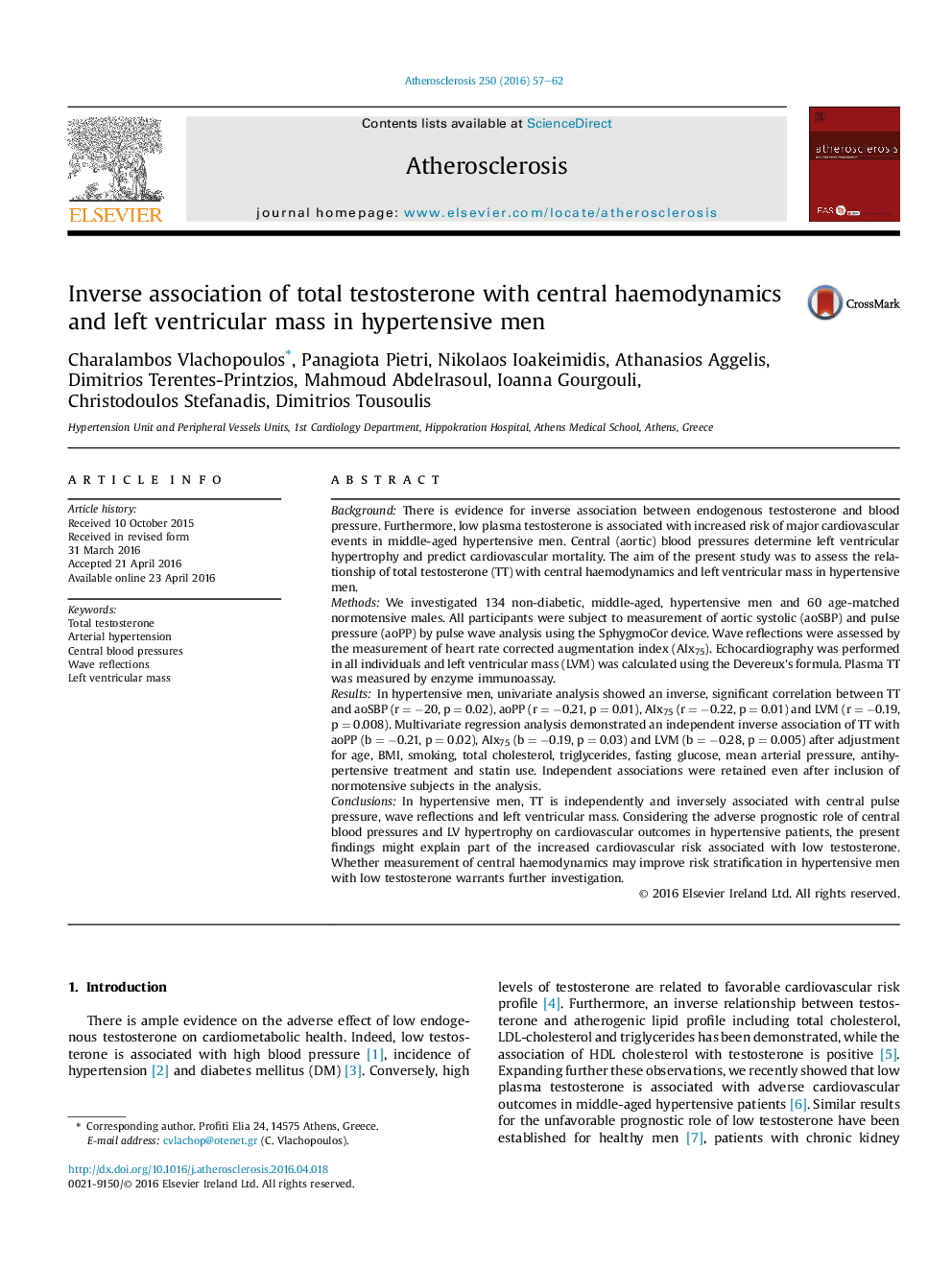| Article ID | Journal | Published Year | Pages | File Type |
|---|---|---|---|---|
| 5943134 | Atherosclerosis | 2016 | 6 Pages |
â¢An inverse association of total testosterone with central haemodynamics and left ventricular mass is demonstrated.â¢This finding may explain part of the increased cardiovascular risk associated with low testosterone.â¢Measurement of central haemodynamics in daily, clinical practice may improve risk stratification in hypertensive men with low testosterone.
BackgroundThere is evidence for inverse association between endogenous testosterone and blood pressure. Furthermore, low plasma testosterone is associated with increased risk of major cardiovascular events in middle-aged hypertensive men. Central (aortic) blood pressures determine left ventricular hypertrophy and predict cardiovascular mortality. The aim of the present study was to assess the relationship of total testosterone (TT) with central haemodynamics and left ventricular mass in hypertensive men.MethodsWe investigated 134 non-diabetic, middle-aged, hypertensive men and 60 age-matched normotensive males. All participants were subject to measurement of aortic systolic (aoSBP) and pulse pressure (aoPP) by pulse wave analysis using the SphygmoCor device. Wave reflections were assessed by the measurement of heart rate corrected augmentation index (AIx75). Echocardiography was performed in all individuals and left ventricular mass (LVM) was calculated using the Devereux's formula. Plasma TT was measured by enzyme immunoassay.ResultsIn hypertensive men, univariate analysis showed an inverse, significant correlation between TT and aoSBP (r = â20, p = 0.02), aoPP (r = â0.21, p = 0.01), AIx75 (r = â0.22, p = 0.01) and LVM (r = â0.19, p = 0.008). Multivariate regression analysis demonstrated an independent inverse association of TT with aoPP (b = â0.21, p = 0.02), AIx75 (b = â0.19, p = 0.03) and LVM (b = â0.28, p = 0.005) after adjustment for age, BMI, smoking, total cholesterol, triglycerides, fasting glucose, mean arterial pressure, antihypertensive treatment and statin use. Independent associations were retained even after inclusion of normotensive subjects in the analysis.ConclusionsIn hypertensive men, TT is independently and inversely associated with central pulse pressure, wave reflections and left ventricular mass. Considering the adverse prognostic role of central blood pressures and LV hypertrophy on cardiovascular outcomes in hypertensive patients, the present findings might explain part of the increased cardiovascular risk associated with low testosterone. Whether measurement of central haemodynamics may improve risk stratification in hypertensive men with low testosterone warrants further investigation.
